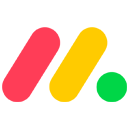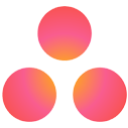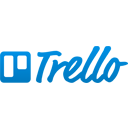The 13 best software packages for easy Gantt chart creation
Gantt is the essential planning software for efficient project management. From task listing to project tracking, it provides a graphical, global view of your project.
This management tool is also a decision-making aid. Task management is the foundation of successful project management: you gain visibility over your activities and resources.
Are you new to project management? Do you draw up your own Gantt chart in Excel, and would like to equip yourself with dedicated Gantt software? This article is for you.
Compare project management software to get your projects off the ground.
What is online Gantt chart software and what is it used for?
Online Gantt chart software defines a project management tool used to visualize the progress of tasks in the form of chronological bars on a time scale.
The aim? To provide a clear, precise overview of the schedule, displaying dependencies, milestones and allocated resources.
This tool makes it easy to :
- plan tasks according to deadlines,
- coordinate teams, even remotely,
- anticipate delays and adjust schedules in real time,
- share planning with stakeholders for greater transparency,
- analyze workloads and optimize resources.
What's more, thanks to these solutions, static Excel files are a thing of the past! Everything is updated automatically, and information is accessible anywhere, anytime. Practical for telecommuting teams or those spread over several sites!
And when it comes to functionalities, you benefit from a host of time-saving and reliable tools: drag & drop, notifications, priority management, integration with other tools such as Slack or Trello... turn your schedule into a veritable control tower for your project.
Finally, why opt for online software rather than a traditional tool? The answer is simple:
- real-time collaboration,
- flexibility,
- zero installation.
In other words, all it takes is Internet access to align all stakeholders.
Comparative table of 13 Gantt software packages in 2025
1 of 11
 monday.com |  Wrike |  Zoho Projects |  Asana |  Beesbusy |  Clarizen |  GanttPRO |  Gladys |  Planisware Orchestra |  Sciforma |  Trello |
|---|---|---|---|---|---|---|---|---|---|---|
| For all companies | For companies with more than 50 employees | For all companies | For companies with more than 1 employees | For companies with 2 to 5000 employees | For companies with more than 50 employees | For companies with more than 5000 employees | For companies with 2 to 5000 employees | For companies with more than 250 employees | For all companies | For all companies |
| See software | See software | See software | See software | See software | See software | See software | See software | See software | See software | See software |
| Learn more about monday.com | Learn more about Wrike | Learn more about Zoho Projects | Learn more about Asana | Learn more about Beesbusy | Learn more about Clarizen | Learn more about GanttPRO | Learn more about Gladys | Learn more about Planisware Orchestra | Learn more about Sciforma | Learn more about Trello |
monday.com
monday.com is a fun, intuitive work management platform that helps you manage your team projects, while reinforcing transparency within your company.
Who it's for: project leaders, managers and directors of start-ups, SMEs and large corporations.
Key features:
- Take advantage of over 100 colorful, customizable project vision templates. Tailor them to your business needs: logo, color, filters, etc.
- Collaborate directly in your "Gantt View" tool thanks to a space dedicated to real-time communication: share files, comments and keep your collaborators informed easily thanks to automatic notifications on each update.
- Label the elements of your Gantt chart at your convenience: add references in real time (milestones, deadlines, etc.), make organization easier with the blue bar indicating the current date, so you know where you stand.
Prices: 4 monthly subscriptions:
- "Basic" at 9€/user,
- "Standard" at 12€/user,
- "Pro" at 19€/user
- "Enterprise" with price on request.

monday.com
Asana
Asana is work management software that helps teams coordinate and manage their tasks and projects.
Who it's for: Asana is ideal for small and medium-sized businesses looking to improve their project management.
Key features:
- Track the progress of your Gantt charts in real time, while maintaining control over project planning and being able to make any necessary adjustments with just a few clicks.
- Your Gantt chart updates automatically to keep each user up to date with the latest project news.
- Easily visualize the tasks to be completed, their deadlines and the time to devote to each one to optimize your organization.
Pricing: The free version of Asana is very comprehensive, but limited to 15 users. There are 2 paid subscriptions:
- "Premium" at $10.99
- "Business" at $24.99.

Asana
Beesbusy
Beesbusy is a work management tool that lets you organize your day-to-day activities, manage your projects and plan your tasks.
For whom: Beesbusy is designed for teams of all sizes. It can also be used in all business sectors.
Key features:
- Take advantage of a Gantt chart in "Multi-project" view, giving you access to an overview of your activities in precise chronological order, while applying customized filters.
- View planned and completed times for each task, to analyze the actual hours spent on each of your projects or activities.
- Benefit from 3 different views on your Gantt chart: "What" which lists tasks and their status, "When" which gives you a temporal vision of your activity and "Who" which shows the distribution of tasks.
Pricing: Beesbusy has a free but limited version. There are 2 paid subscriptions:
- "Business" at €9.99
- "Enterprise" at €19.99.

Beesbusy
Clarizen
Clarizen is an ultra-collaborative, easy-to-integrate software package that helps companies manage their projects and business activities.
Who it's for: Clarizen is aimed primarily at large accounts and SMEs.
Key features:
- Enjoy an interactive Gantt chart with a unified view alongside the data grid, for clearer, more efficient visualization.
- Drag-and-drop capabilities that let you :
- easily adjust task deadlines,
- report work by modifying the % completed of each task,
- make changes in real time,
- create dependencies between tasks. - Unlimited use of labels, with several types of view (annual, quarterly...).
Pricing: No free trial. The software offers 2 types of subscription:
- "Enterprise" at 60€/month/user
- "Unlimited" at 75€/month/user.

Clarizen
GanttPro
Ganttpro is a U.S.-based online project management software that dematerializes and centralizes your project managementon an all-in-one platform.
Who it's for: Start-ups, agencies, VSEs, SMEs and GEs.
Key features:
- The software lets you view your Gantt charts from different angles:
- grid view: define the status, priorities, costs, durations and progress of your tasks and projects,
- table view: organize tasks in the form of cards, which you can drag and drop,
- portfolio view: provide an overview of all project information. - GanttPRO also integrates automatic scheduling functions to help users manage project milestones and tasks.
Pricing: Free trial with no credit card required. 3 subscriptions available:
- "Individual" at $15/month,
- "Team" at $8.90/month/user,
- "Enterprise" with price on request.

GanttPRO
Gladys
Gladys is a comprehensive, innovative project management tool , 100% Made in France, that helps SMEs get the job done and achieve their individual, team and organizational objectives, thanks to a range of views (table, Kanban, Gantt, list, etc.) and advanced collaboration features. A true all-in-one tool, it also includes a centralized document manager for sharing project files with the team, as well as instant messaging and a calendar to facilitate communication between team members.
Who it's for: SMEs, ETIs and local authorities.
Key features :
- You plan the duration of your tasks, manage associated resources and visualize dependencies with an intuitive Gantt view updated in real time,
- You benefit from detailed reports on the progress of each action plan and associated tasks, thanks to a powerful analytical tool,
- You benefit from tailor-made, modular support, with Gladys teams configuring the solution to meet your specific needs (collaborative intranet, strategic business plan management, project portfolio management, etc.),
- The platform is available on PC, tablet and mobile for maximum accessibility.
Pricing :
- A free version for small companies: 2 projects, 5 team members per project and standard functionalities;
- A "Premium" plan from €9/month for standard companies: unlimited projects, customized fields and premium features;
- A "Business" plan with on-demand pricing for large companies: unlimited projects, Customer Success Program and Business module access (Program, Comitology).

Gladys
Planisware Orchestra
Planisware Orchestra is project portfolio management software that gives you real-time visibility of your project teams' activities.
Who it's for: SMEs and large groups.
Key features:
- Cascade planning via a Gantt chart for easy visualization of your projects. Customize filters with a fixed scope and budget.
- You can also visualize your resource allocations graphically thanks to the Gantt view. All in real time, for one or more projects, at a given period.
- With its Gantt view options, you benefit from a complete, fully customizable tool.
Rates: 14-day free trial. Two monthly subscriptions:
- "SaaS Pack at €25/user
- "ON SITE Pack" at €550 once.

Planisware Orchestra
Sciforma
Sciforma is a powerful, easy-to-use, quick-to-implement PPM (project portfolio management) tool that meets the strategic, executive and reporting needs of the PMO.
Who it's for: VSEs, SMEs and large corporations.
Key features:
- Benefit from a powerful, all-in-one Gantt view to effectively manage :
- your projects,
- assignments (manpower and resources),
- transactions,
- deliverables
- risks, etc. - Track the evolution of your Gantt chart via customizable and entertaining dashboards.
- The software facilitates the project selection process to ensure that investment levels in various project groupings are in line with corporate strategies and priorities.
Prices: Customized package €10/month/user.

Sciforma
Smartsheet
Smartsheet is a dynamic, collaborative workspace software that enables teams to manage their projects while automating their workflows.
Who it's for: VSEs, SMEs and GEs.
Main features:
- The "Gantt Chart" visualization mode gives you several advantages:
- display interdependencies and track the relationship between tasks,
- display your project's critical path,
- display the % progress of your tasks,
- use the hierarchy to create summary lines to further organize your projects. - You benefit from a "Project parameters" form, where you can :
- activate interdependencies for automatic calculation of task duration,
- configure holidays, etc.
Rates: 30-day free trial without credit card. 3 paid monthly subscriptions:
- "Pro" at 6€/user,
- "Business" at €22/user,
- "Enterprise" with price on request.
Trello
Trello is a free, easy-to-use and intuitive application for teams who want to collaborate easily on projects.
Who's it for? Students, start-ups, VSEs, SMEs and GEs.
Key features:
- All group members are informed of updates to your Gantt chart in real time, while sharing a global vision of the project.
- You benefit from peace-of-mind planning, so you can make more targeted, efficient decisions in terms of resource allocation, deadlines and target dates.
- You'll be able to keep track of your project's progress thanks to clear, easy-to-read dashboards.
Pricing: Trello has a complete, 100% free version, albeit somewhat limited. The platform offers 3 paid subscriptions, including the "Business Class" package at $10/user/month.

Trello
Wrike
Wrike is cloud-based work management software that boosts your teams' productivity. With over 20,000 customers, including Google and Hootsuite, the software adapts to the most complex projects with a host of features, including interactive Gantt charts.
Who's it for?
Wrike is aimed at companies of all sizes and in all sectors. However, it has specific offerings for marketing agencies and service delivery teams (ESN).
Key features:
- dynamic Gantt charts for an optimum overview, tracking the progress of your projects, their scope and associated dependencies,
- intelligent critical path analysis to identify bottlenecks,
- management of multiple complex projects thanks to Gantt planning (easy drag-and-drop updating, cross-team collaboration).
Pricing:
Wrike offers 4 paying packages including different functionalities:
- Professional offer at $10/month/user,
- Business at $24.80/month/user,
- Enterprise package on request,
- Pinnacle offer on request.

Wrike
Zoho Projects
Zoho Projects is online project management software that helpsyou plan your work efficiently, while managing your resources, time and budgets.
Who it's for: Small, medium and large businesses.
Key features:
- Identify your project's critical tasks with the tool's integrated Gantt chart software, so you can plan and allocate resources accordingly.
- Set up baselines in the Gantt charting tool to compare project progress over different periods. Thanks to this gap, you'll be able to easily identify delayed tasks that need to be addressed.
- Convert an existing project into a Gantt chart template and use it to create new projects quickly.
Price: Free version limited to 5 users and 3 projects. 4 paid monthly subscriptions ranging from €18/15 users to €150/25 users.

Zoho Projects
Our Gantt software selection criteria
To present this selection of software, we have first of all used basic criteria:
- The platform's reputation,
- Relevance and richness of project management functionalities,
- Clear, intuitive visualization and monitoring of project progress,
- Ease of use (ergonomics, graphics),
- Real-time visualization of project milestones,
Then on more advanced project management and Gantt charts:
- The ability to plan a project via a detailed calendar, while integrating different collaborators and tasks,
- Access to a customizable Gantt chart to facilitate project management,
- The ability to connect from different devices: computer, tablet, smartphone... the software must be able to update itself on all devices at the same time, so that you don't miss out on any potential changes to your Gantt chart,
- The presence of a genuine collaborative workspace: exchanging information quickly and easily with your colleagues is essential,
- A secure storage space where everyone involved in your project can access files in total security.
Which online project management software is right for you?
To find out and make the best choice, start by analyzing and precisely defining your needs. Depending on :
- the size of your company,
- your business sector,
- the type of projects you run,
- your customers, etc,
the right tool for you can vary.
To get a clear idea and decide which features are essential for you, opt for a trial version of the Gantt application that appeals to you!